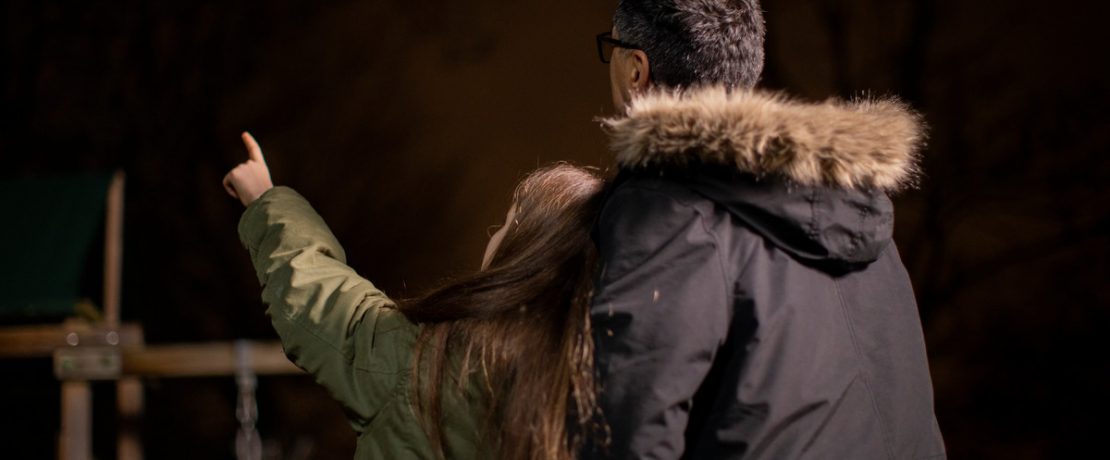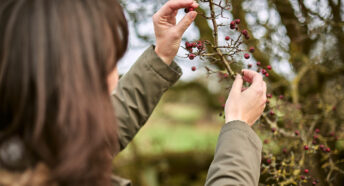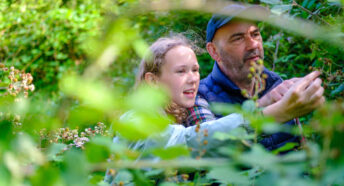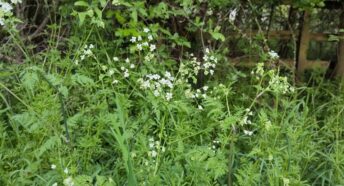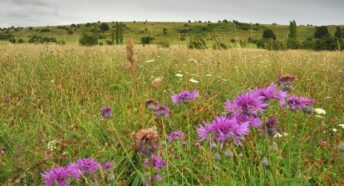Wildflowers and dark skies
During 2022 we’re putting the spotlight on Bedfordshire’s flora – everything from wildflowers to hedgerows and trees to fungi. Between 26 February – 6 March 2022 we’ll also be getting involved with CPRE’s Star Count which maps dark skies and light pollution.
We know that light pollution disrupts nature’s natural rhythms but does it have a specific impact on our plant life? We decided to investigate.
Pollinators
Research has suggested that moths, which play an important role in pollinating flowers during their nocturnal activity and have declined in abundance by 40%, might have been disrupted by light pollution. The moths are drawn away from visiting flowers as they are attracted by street lights – this means less pollen is carried by moths in lit areas.
The good news is that the data showed that the differences between pollination under full-night lighting and in natural darkness were strongly decreased when lights were turned off at midnight. Switching street lighting off in appropriate locations is therefore win-win – reducing energy use and the ecological impact of light pollution.
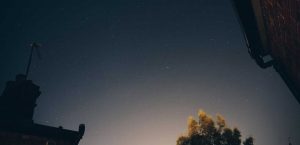
Early bud burst
In a UK based study lasting over a decade, scientists looked at the timing of bud opening in trees, and matched it up with satellite imagery of night-time lighting. After controlling for urban heat, they found that artificial lighting was linked with trees bursting their buds more than a week earlier. Early bud opening leaves trees vulnerable to frost and diseases.
Researchers looking at woodlands believe that early bud bursting will have a cascade effect on other organisms whose life cycles work in synchronicity with the trees. The winter moth which feeds on fresh emerging oak leaves is likely to be affected, less moths may in turn have an impact on birds in the food chain that rely on it for food.
Recovery time
Wildflowers on roadside verges are exposed to pollution, periods of darkness can be critical for plants to repair and recover from environmental stresses. Disturbing natural light cycles may make it more difficult for plants to recover.
It’s complicated
Separating out the impact of artificial light on plants from the impact of other factors such as climate change, pollution and habitat fragmentation is difficult. Many wildflowers face multiple threats so it’s important to consider how all the issues connect together.
Location, location, location
Manmade light sources are concentrated along road verges and hedgerows, in gardens, and in towns and cities. These are places where we need to help nature to thrive if we are going to help halt the decline in biodiversity.
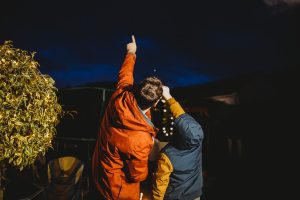
Get Involved
Each year CPRE hold a Star Count. The Star Count maps light pollution and how it changes year on year. We’ll be asking you to choose a clear night between 26 February – 6 March 2022 and look to the skies to see how many stars you can spot within Orion. And don’t worry, we’ll give lots of guidance so you know where to look! It’s a great, easy piece of stargazing – no telescopes required – for kids and adults, and it can be done safely from your garden, balcony or even bedroom window.
By taking part you’ll be helping us map Bedfordshire’s dark skies. The best places to spot the stars in Bedfordshire are usually reported to the north and west of Bedford – across the Great Ouse Valley.
You can explore the interactive maps and learn more about where you live.
Sign up for Star Count and remember to submit your results!
Want to look at the science in more depth?
Links to the papers and articles we used to compile this article:
- Pollinators: switch street lights off at midnight to help moths and nocturnal wildlife
- Night-time light pollution causes Spring to come early (University of Exeter)
- Light pollution is associated with earlier tree budburst across the United Kingdom (Royal Society)
- Artificial light at night — the impact on plants and ecology (PDF)
- The dark side of light: how artificial lighting is harming the natural world (Nature)
